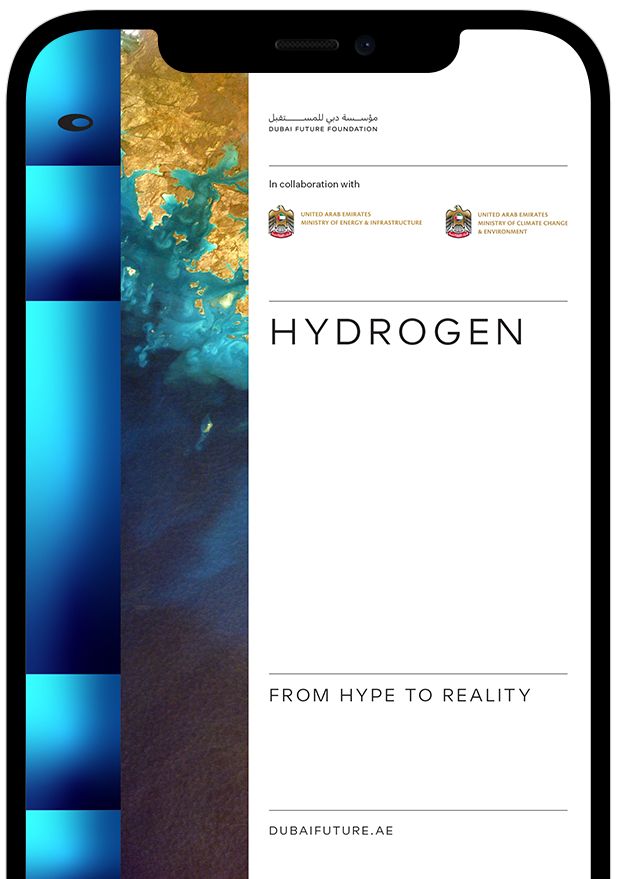The Future
of Hydrogen
in the UAE

HYDROGEN
MATTERS
Our planet’s climate is changing at an alarming rate, in large part due to anthropogenic or human-induced emissions. To scale back these emissions, countries around the world are adopting clean, renewable energy sources, which are becoming more cost-effective than their polluting counterparts in many places. With use limitations facing existing renewables, the world strives to achieve net-zero emissions; Hydrogen will complement other low or zero-carbon energy sources and become a key component of our planet’s clean energy mix, particularly by decarbonising hard-to-abate industries such as steel, cement, aviation, and shipping.
Opportunities
A solution that is innovative and
disruptive to current technologies
Providing Access to Clean Energy
A solution that is innovative and
disruptive to current technologies
Minimising Carbon Emissions in Heavy Industries
Blue and green hydrogen help
minimise the carbon footprint of
high-polluting heavy industries
Energy Storage
for Renewables
Hydrogen acts as a reliable and
cost-efficient mean of storing and
transporting energy to back up
intermittent renewable sources
Heavy Goods
Transport
Existing fuel cell technology enables
Hydrogen to power an extensive
range of vehicle types, most economical
for heavier, lower-range vehicles such
as forklifts and heavy goods vehicles.
Other Applications
Other future applications being explored include the decarbonisation of the aviation and maritime industries through the use of hydrogen fuel cells, ammonia, and green hydrogen-based synthetic fuels.
Hues of Hydrogen

GREY HYDROGEN
Grey hydrogen is produced from fossil fuels, typically natural gas or coal, which are reformed to release the hydrogen from their hydrocarbon molecules, a process that results in carbon dioxide being released into the atmosphere.

BLUE HYDROGEN
Grey hydrogen becomes blue hydrogen when the CO2 emissions are captured and sequestered via CCUS technology, minimising the impact on the environment.

TURQUOISE HYDROGEN
Turquoise hydrogen is produced by a process known as methane pyrolysis, which, like grey and blue hydrogen, involves methane. Methane pyrolysis, however, relies on heat produced with electricity rather than through the combustion of fossil fuels.

GREEN HYDROGEN
Green hydrogen is typically produced via electrolysis of water in which the electricity required to drive the process comes from renewable energy sources such as wind and solar. Water electrolysis is a well-established electrochemical process using equipment known as electrolysers in which electricity applied between two electrodes immersed in water separates water into hydrogen and oxygen.

YELLOW HYDROGEN
Yellow hydrogen refers to hydrogen extracted from water using electrolysis, similar to green hydrogen. The only difference is that the electricity source used is nuclear energy instead of renewables.
Select a scenario and strategy to view the anticipated economic, social, and environmental impact.
